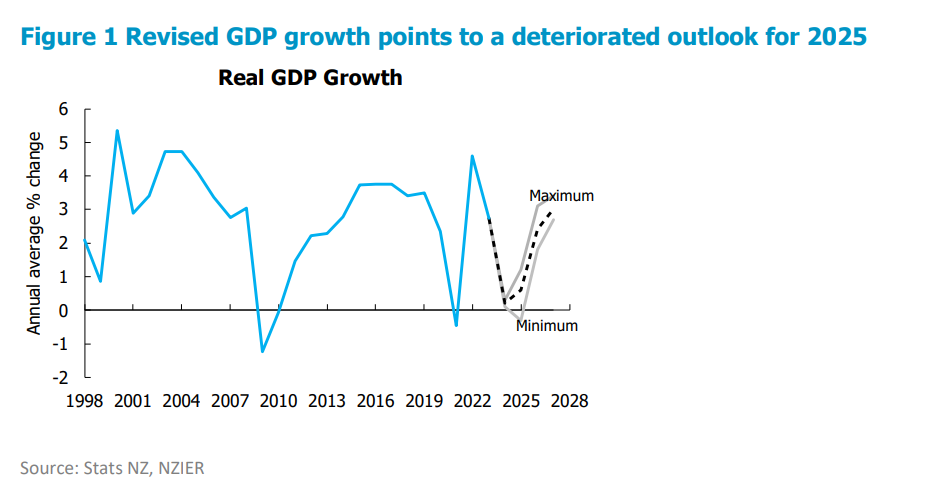Challenging year ahead

The latest NZIER Consensus Forecasts revealed a significant downward revision for New Zealand’s GDP growth, now anticipated to be just 0.2% for the year ending March 2024 and 0.6% for March 2025.
“This revision reflects the lower starting point of the December 2023 quarter GDP, but also points to a deterioration in the growth outlook for the coming year,” said Ting Huang (pictured above), NZIER senior economist.
The ongoing impact of higher interest rates is increasingly felt across various sectors of the New Zealand economy.
See LinkedIn post here.
Household spending and retail trends
Forecast household spending growth has been revised to virtually zero for 2024 and remains weak at 0.5 percent for 2025.
“Retail spending has trended lower as many households reduced discretionary spending in the face of higher mortgage repayments,” Huang said.
The sustained shift to higher fixed-term mortgage rates combined with a slowing labour market are expected to continue suppressing household spending.
Residential investment slumps
The outlook for residential investment in 2025 is particularly bleak, with forecasts indicating a sharp decline.
Contributing factors include a reduction in dwelling consent issuance and a slowdown in architects' work, signalling a continued weakening in the near-term pipeline of residential construction work.
However, Huang remains optimistic about a potential recovery beyond 2025 due to migration-led population growth.
Export and import growth projections
Export growth projections for 2025 and 2026 have been revised downwards in response to a slowdown in global growth and ongoing geopolitical tensions.
“Higher interest rates are driving a slowing in global growth, and thus demand for New Zealand exports,” Huang said.
Similarly, the import growth outlook suggests declines, reflecting expectations of weak domestic spending in the coming years.
Inflation and interest rate forecasts
Inflation forecasts for 2025 have been revised upwards from 2.4% to 2.6%, driven by persistent non-tradable inflation pressures.
“The uncertainty over this sticky non-tradable inflation drives the upward revision in the inflation outlook for the coming year,” Huang said.
Despite these pressures, RBNZ plans to maintain the OCR at 5.5% for an extended period, balancing the risks of inflation against the deteriorating growth outlook.
Labour market adjustments
Wage growth forecasts for 2025 and 2026 have been lowered, reflecting a softening labour market. However, the unemployment rate forecast remains stable, indicating a slight uptick in line with RBNZ’s expectations.
“The forecasts are in line with the RBNZ’s Survey of Expectations, which shows a continued easing in wage growth expectations and expectations of the unemployment rate trending up,” Huang said.
Read the NZIER report in full here.
Get the hottest and freshest mortgage news delivered right into your inbox. Subscribe now to our FREE daily newsletter.



